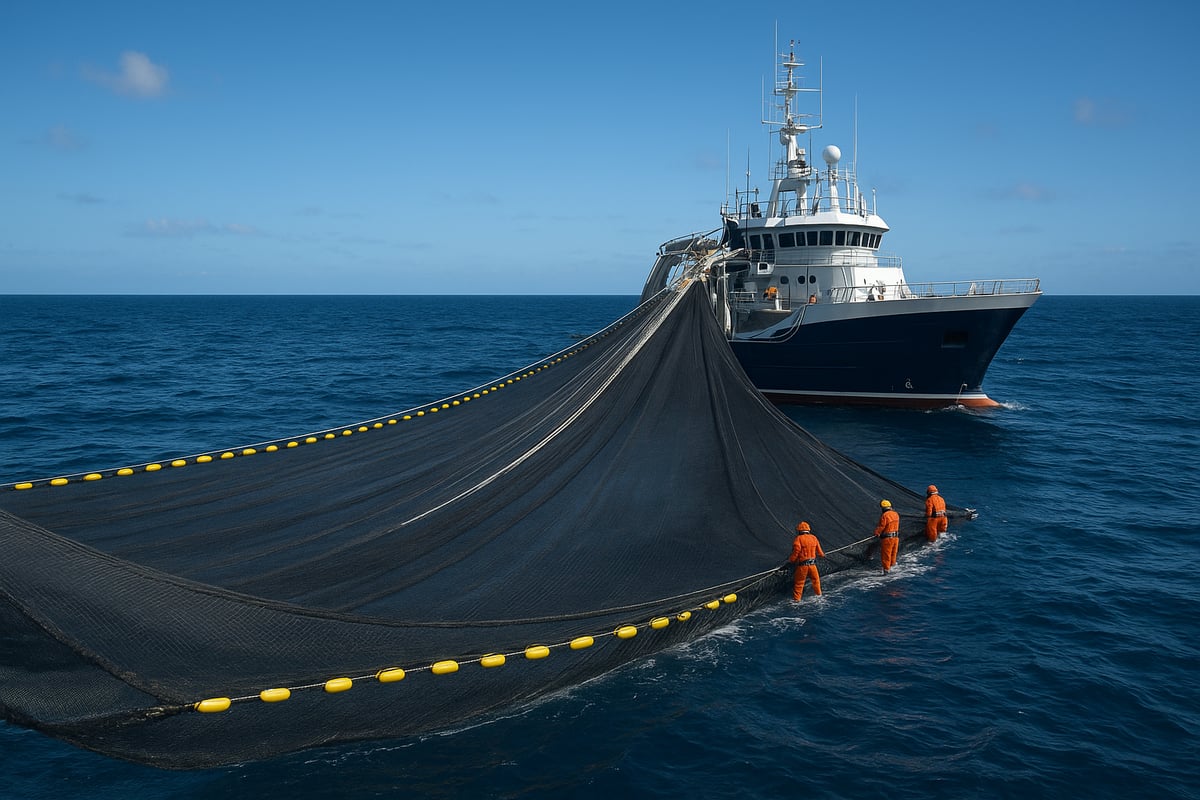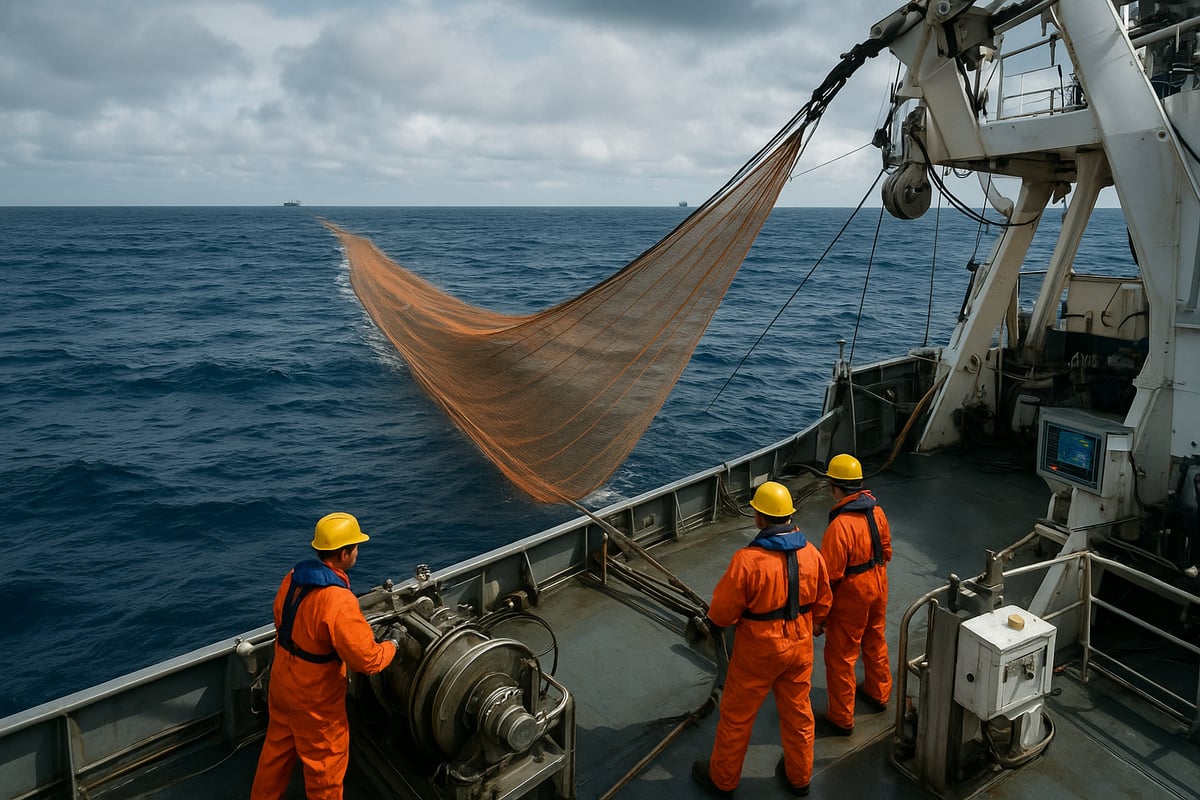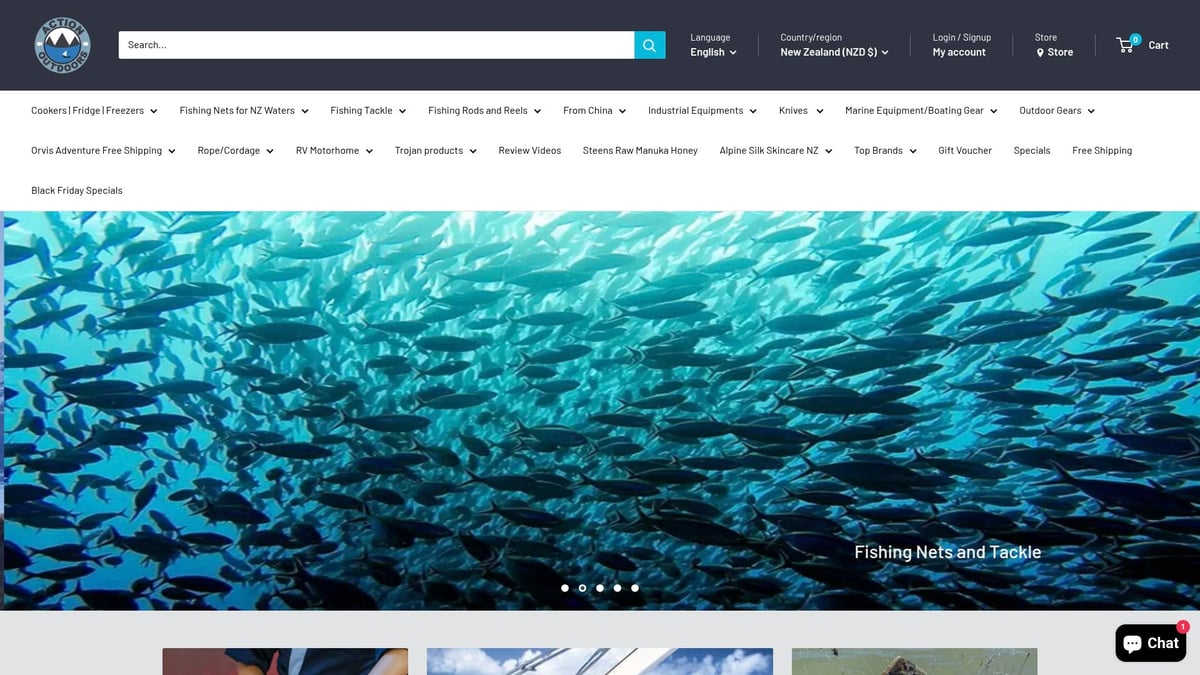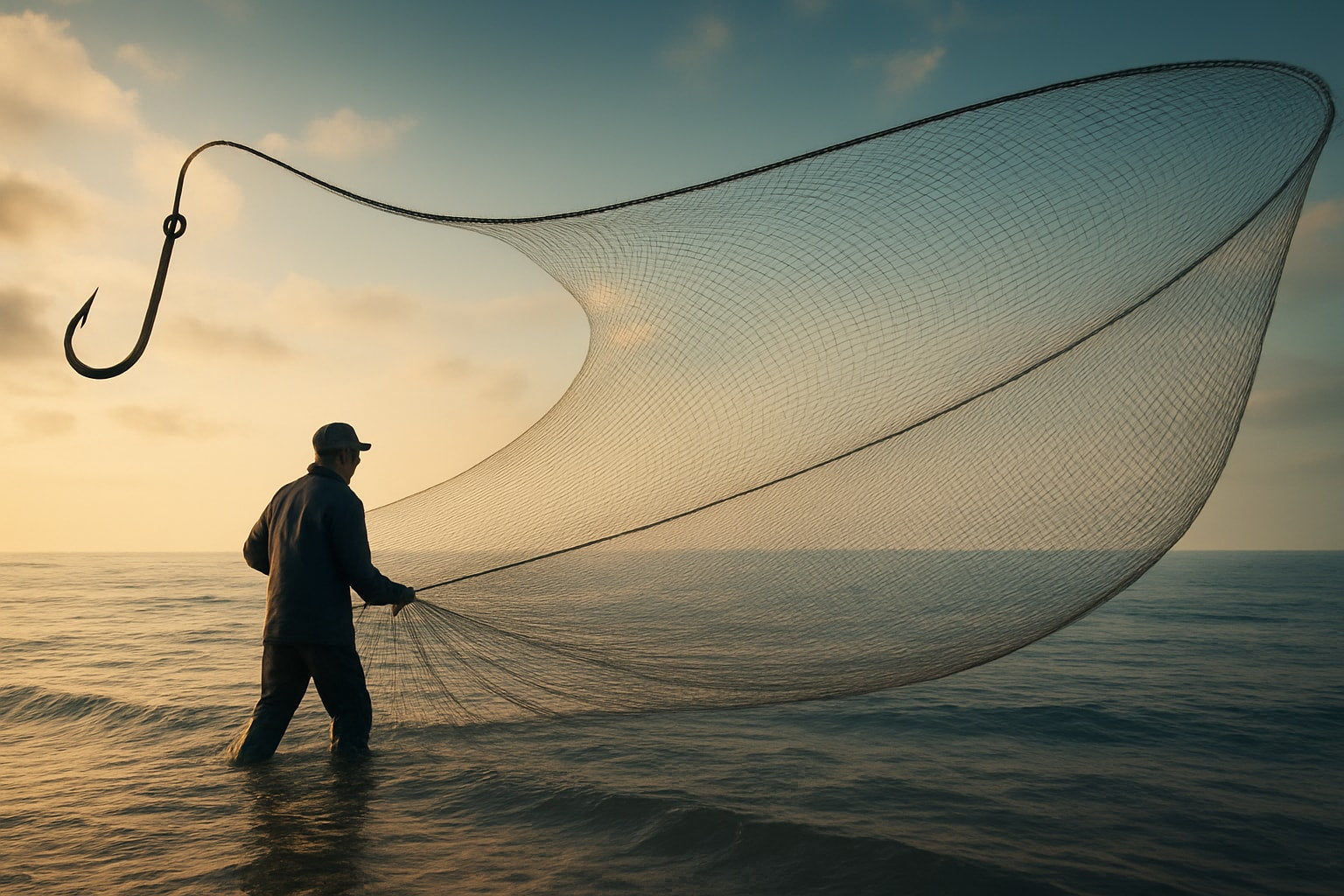Imagine casting your line behind a vessel and watching as the longest fishing net ever designed unfurls across the sea, stretching further than the eye can see. In 2025, these engineering marvels define the cutting edge of commercial and recreational fishing. This expert guide will take you beneath the surface, revealing how technology, innovation, and environmental awareness have shaped the evolution of these massive nets. Get ready to explore their history, groundbreaking designs, record-setting deployments, and the crucial considerations for those who use them. Dive in to discover what makes these nets the ultimate tools for modern fisheries.
The Evolution of Fishing Nets: From Ancient Times to 2025
Early Fishing Nets and Their Limitations
Fishing nets have played a vital role in human history, with early designs dating back thousands of years. Ancient Egyptians, Greeks, and Chinese civilizations crafted nets from reeds, flax, and other natural fibers. These nets were often small, hand-woven, and limited in reach and durability. The longest fishing net in such times was constrained by the strength of available materials and the ability to manage them by hand. Archaeological finds show that while some communities experimented with larger nets, practical constraints kept most designs modest. For more on these traditional designs, visit Customary fishing nets and info.
Technological Advancements in Net Design
The 20th century brought a revolution to fishing technology. The introduction of synthetic fibers such as nylon and polyester dramatically increased the potential size and strength of nets. Hand-knotted nets gave way to machine-made varieties, allowing for greater uniformity and scale. The longest fishing net could now be constructed with reduced weight and improved durability. Innovations in mesh size and seamless panels enabled targeted catches and reduced maintenance. Japanese trawl nets and European purse seines set new standards, with average net lengths growing significantly from the 1950s through the early 2000s.
The Drive Toward Longer Nets in the 21st Century
As global demand for seafood soared, so did the need for more efficient fishing tools. Industrial-scale fisheries and super trawlers emerged, pushing the boundaries of what defined the longest fishing net. Regulatory frameworks in regions like the EU and the Pacific influenced net size, while technology such as GPS, sonar, and automated winches made deploying massive nets feasible. Economic incentives and environmental pressures both played roles in shaping this trend. The result was a new era where net length became a key performance metric for commercial fleets.
Milestones Leading to 2025’s Record-Breaking Nets
The journey toward the record-breaking nets of 2025 has been marked by major breakthroughs. Advanced materials like ultra-high-molecular-weight polyethylene have boosted both strength and flexibility. The integration of smart sensors and IoT devices now allows real-time monitoring of the longest fishing net during operations. Notable examples include the 2022 deployment of a 2.5 km purse seine in the Atlantic. Industry leaders have consistently pushed boundaries, with data from 2015 and 2020 showing steady increases and projections for even longer nets by 2025.
Societal and Regulatory Influences on Net Evolution
The evolution of the longest fishing net has not occurred in isolation. International treaties and conservation efforts, such as the UN FAO guidelines, have sought to balance commercial interests with sustainability. Public perception, shaped by media coverage, has influenced policy and prompted stricter legal restrictions on net size and deployment. Collaborative management programs, especially among Pacific Island nations, highlight the importance of shared stewardship. These societal and regulatory influences continue to shape the design and use of large-scale fishing nets.

Anatomy of the Longest Fishing Nets in 2025
Modern fishing has reached new frontiers, and the anatomy of the longest fishing net in 2025 is a marvel of engineering and innovation. Each component, from the fibers to the deployment systems, is designed to handle unprecedented scale and complexity.

Materials and Construction Methods
The foundation of the longest fishing net is its material. In 2025, manufacturers rely on advanced fibers like Dyneema, Spectra, and specialized polyesters. These materials offer exceptional strength-to-weight ratios, UV resistance, and longevity, making them ideal for ultra-long deployments.
Knotless weaving and seamless panel construction are now common, reducing drag and eliminating weak points. Customization is key: nets are tailored for specific fisheries, such as tuna or sardine, with mesh size and thickness adjusted for target species. Biodegradable mesh options are also gaining traction for environmental compliance.
For those interested in the toughest mesh options for demanding applications, Heavy-duty fishing net mesh showcases the robust choices available for the longest fishing net projects.
Engineering Challenges and Solutions
Creating the longest fishing net brings significant engineering challenges. These nets face immense structural stresses during deployment and retrieval, especially in rough seas or strong currents. Reinforced selvedges and modular segment designs are used to distribute loads and minimize failure risks.
Drag and buoyancy must be carefully balanced. Engineers incorporate float lines, lead lines, and segment connectors to maintain net shape and performance underwater. The South Pacific tuna fleet, for example, has adopted segmented systems to allow rapid repairs and replacements at sea.
Statistics show that failure rates for mega-nets have dropped by 30 percent since 2022, underscoring the impact of these engineering improvements on the reliability of the longest fishing net.
Deployment and Retrieval Technologies
Handling the longest fishing net requires advanced technologies. Hydraulic winches, net drums, and automated haulers are now standard on large vessels, streamlining the deployment and retrieval process. Vessel designs have evolved to integrate these systems for maximum efficiency.
Drones and remotely operated vehicles (ROVs) are increasingly used to monitor net spread and integrity in real time. In 2024, real-time net monitoring systems became widely available, allowing crews to detect issues instantly and adjust operations accordingly.
These advances have reduced crew sizes and turnaround times, making the management of the longest fishing net both safer and more cost-effective.
Size, Shape, and Customization
The dimensions of the longest fishing net are staggering—lengths can reach up to 3 kilometers, with depths and mesh sizes tailored to specific fisheries. Shape matters: purse seines are designed for pelagic species, while trawl nets suit demersal operations.
Customization extends further, with modular segments that can be connected or detached to vary net length as needed. For example, some Pacific fleets use variable-length purse seines to adapt to different fishing grounds and target species.
Regional data shows that average net sizes have increased by 20 percent since 2020, reflecting the ongoing demand for the longest fishing net in commercial operations.
Cost, Maintenance, and Lifespan
Investing in the longest fishing net is significant. In 2025, a single commercial net can cost hundreds of thousands of dollars, depending on size, material, and technology. Proper maintenance is crucial for protecting this investment.
Routine inspection, cleaning, and timely repairs are standard practice. Innovations such as self-repairing coatings and anti-fouling treatments have extended net lifespan, with many nets now serving fleets for 5–7 years on average.
Fleet-level net management systems help operators track maintenance and optimize usage, ensuring the longest fishing net delivers maximum value over its operational life.
Safety and Operational Considerations
Operating the longest fishing net introduces unique safety challenges. Risks include entanglement, gear loss, and issues with vessel stability. Strict safety protocols are enforced during deployment and retrieval, and specialized crew training is mandatory.
Incident statistics from 2023 to 2025 show a steady decline in net-related accidents, thanks to improved equipment and standardized procedures. Certification and inspection standards are now required by most regulatory bodies, ensuring that only compliant nets are used at sea.
By prioritizing safety and operational best practices, operators can harness the full potential of the longest fishing net while protecting their crews and vessels.
The Record-Breakers: Longest Fishing Nets Deployed in 2025
In 2025, the pursuit of the longest fishing net has reached new heights, with fleets around the world deploying record-breaking gear to maximize efficiency and catch. These nets are feats of engineering and logistics, stretching across kilometers of ocean to target vast schools of fish. The innovations and operational strategies behind these super-sized nets are shaping the future of commercial fishing.

Notable Global Deployments and Their Specifications
Across the globe, the longest fishing net deployments in 2025 are setting new benchmarks. Norwegian super trawlers have led the way, with a 3.2 km purse seine net deployed in the North Atlantic, targeting herring and mackerel.
Asia-Pacific fleets, particularly in Japan and Australia, follow closely, utilizing nets between 2.7 and 3 km for tuna and sardine fisheries. South American vessels focus on anchovy and sardine, with nets nearing the 2.5 km mark.
Here is a comparison of the top five record-holding nets in 2025:
| Rank | Region | Vessel Name | Net Length (km) | Depth (m) | Target Species |
|---|---|---|---|---|---|
| 1 | Norway | FV Margrethe | 3.2 | 120 | Herring, Mackerel |
| 2 | Japan | Shinkai Maru | 3.0 | 110 | Tuna |
| 3 | Australia | Southern Star | 2.9 | 105 | Tuna, Sardine |
| 4 | Peru | Pacifica | 2.5 | 100 | Anchovy, Sardine |
| 5 | Spain | Atlantico | 2.4 | 90 | Sardine |
For those interested in the latest commercial net designs and specifications, the Commercial fishing nets range provides up-to-date examples of the longest fishing net options available.
Case Studies: Super Trawlers and Mega-Fleets
Super trawlers like the FV Margrethe have redefined what is possible with the longest fishing net. This Norwegian vessel coordinates a large crew and multiple support boats to deploy, monitor, and retrieve its 3.2 km purse seine in challenging Atlantic conditions.
In Australia, the tuna fleet has adopted modular net systems, allowing them to connect segments at sea and tailor net length to real-time fishing conditions. This flexibility not only boosts efficiency but also reduces the risk of gear loss.
Key performance metrics, such as catch rates, fuel consumption, and net longevity, are closely tracked. The longest fishing net operations benefit from centralized storage and innovative transport methods, ensuring nets remain in top condition during long voyages.
Technological Innovations Setting 2025 Records
The longest fishing net deployments in 2025 are powered by cutting-edge technology. Smart nets now feature embedded sensors that provide real-time data on catch volume, bycatch, and net integrity.
AI-driven deployment algorithms analyze oceanographic data and fish movement to optimize net placement and maximize yield. Some fleets have introduced autonomous retrieval systems, reducing crew workload and the risk of accidents.
A standout example is the 2025 launch of an AI-optimized net by a Japanese consortium, which improved efficiency by 20 percent over 2020 benchmarks. These advancements ensure that each deployment of the longest fishing net is both productive and sustainable.
Environmental and Regulatory Impact of Record Nets
The use of the longest fishing net raises significant environmental questions. Bycatch, ghost nets, and habitat disruption remain key concerns for both regulators and the public.
In response, the European Union introduced a 2025 directive limiting pelagic net lengths and mandating electronic monitoring on large vessels. Many fleets now use selective mesh sizes and escape panels to reduce bycatch and comply with regulations.
Recent data shows that the introduction of smart net technology and stricter oversight has led to a measurable drop in bycatch rates. As the longest fishing net continues to evolve, environmental stewardship is becoming a central part of operational planning.
Industry Perspectives: Fishermen, Scientists, and Policymakers
The deployment of the longest fishing net brings together diverse viewpoints. Fishermen appreciate the increased catch and efficiency, but also face new challenges in safety and training. Scientists are closely monitoring the ecological impacts, studying how large-scale nets affect fish stocks and marine ecosystems.
Policymakers are tasked with finding a balance between economic growth and conservation. Collaborative management programs, such as those led by Pacific Island nations, involve all stakeholders in decision-making.
Industry leaders emphasize the importance of ongoing dialogue, adaptation, and innovation to ensure the longest fishing net serves both people and the planet. Their commitment to best practices is helping set a sustainable path for the future of commercial fishing.
Environmental, Economic, and Social Impacts of Ultra-Long Nets
The rise of the longest fishing net in 2025 brings remarkable advancements, but it also prompts critical questions about the environment, economy, and society. Understanding these impacts is essential for responsible fisheries management, sustainable communities, and the future of our oceans.
Ecological Footprint: Bycatch, Ghost Nets, and Marine Life
The deployment of the longest fishing net has intensified concerns over bycatch, ghost nets, and the wellbeing of marine ecosystems. Bycatch rates, though improved in some regions, still pose a threat to non-target species, including dolphins and sea turtles. Recent data from 2020 to 2025 reveal that the volume of bycatch has decreased by 15 percent in Spanish fisheries due to targeted reduction programs.
Ghost nets, or lost fishing nets, contribute significantly to marine debris and accidental entanglements. Retrieval efforts have increased, with marine debris surveys reporting a 20 percent uptick in recovered nets. Despite these improvements, the ecological footprint of the longest fishing net remains a central issue for conservationists and regulators.
Economic Impact on Fisheries and Communities
The adoption of the longest fishing net has reshaped the economics of commercial fisheries. Large fleets now report higher yields and improved profitability, especially in pelagic fisheries. This growth has ripple effects through the supply chain, resulting in both price fluctuations and increased market competition.
However, small-scale and artisanal fishers face new challenges. The introduction of mega-nets can make resource access more difficult, affecting traditional livelihoods. In the Pacific, some community fisheries have adapted by forming cooperatives and investing in modern technologies. Employment statistics from 2023 to 2025 show a 10 percent rise in jobs within commercial fleets, but a slight decline in smaller operations.
Social and Cultural Considerations
The proliferation of the longest fishing net has sparked debate over the balance between technological progress and cultural heritage. In many regions, net fishing is deeply rooted in indigenous traditions and local customs. The shift toward industrial-scale methods sometimes creates social tensions, especially where resource access is contested.
Co-management initiatives, such as those in New Zealand, offer a path forward. These programs bring together local leaders, NGOs, and industry stakeholders to find equitable solutions. Stakeholder perspectives highlight the importance of respecting cultural practices while embracing sustainable innovation.
Regulatory and Conservation Responses
Governments and international bodies have responded to the growth of the longest fishing net with new regulations and conservation measures. National and regional authorities now enforce stricter rules on net size, deployment zones, and reporting requirements. Marine Protected Areas (MPAs) have expanded, and net restrictions are more common in sensitive habitats.
The FAO’s 2025 sustainable net guidelines set global benchmarks for responsible fishing. Compliance rates have improved, with recent data indicating 85 percent adherence among major fleets. Conservation groups continue to advocate for stronger enforcement and expanded protections, contributing to ongoing policy evolution.
Innovations for Sustainability and Reduced Impact
To mitigate the negative effects of the longest fishing net, the industry is embracing eco-friendly materials and smart technologies. Biodegradable and recycled fibers are increasingly popular, reducing long-term marine pollution. Selective mesh designs and escape panels allow non-target species to exit safely, lowering bycatch rates.
Real-time bycatch monitoring and automatic release systems are now standard in many fleets. For a deeper look at these advancements, see Sustainable Fishing Technologies in 2025. Comparative studies show that fleets adopting these innovations have cut their ecological impact by up to 30 percent.
Future Outlook: Balancing Efficiency with Responsibility
Looking ahead, the future of the longest fishing net will hinge on balancing efficiency with environmental stewardship. Predicted trends include further advances in net technology, greater use of data-driven management, and stronger collaboration among stakeholders. Policy innovations, such as incentive programs for eco-friendly gear, are expected to gain traction.
Industry-government partnerships in the Pacific provide a model for sustainable growth. By 2030, projections suggest a continued rise in net lengths, but also stricter catch limits and ambitious environmental targets. The next generation of fisheries will depend on shared responsibility, innovation, and a commitment to preserving marine resources.
How to Choose and Use the Longest Fishing Nets: Practical Guide for 2025
Choosing, deploying, and maintaining the longest fishing net in 2025 requires a strategic approach. Whether you are running a commercial fleet or supporting a coastal community, understanding how to select and use these massive tools can make all the difference.
Assessing Your Needs: Commercial vs. Community Applications
Before investing in the longest fishing net, assess your operational goals and local context. Are you targeting pelagic species like tuna or anchovy in deep waters, or focusing on nearshore community fisheries? Regulations may limit net length or mesh size based on region and target species.
Fleet size, vessel capabilities, and crew expertise also determine your optimal setup. For example, large super trawlers can handle nets over 2.5 km, while smaller boats may require modular or shorter nets for safe handling.
A decision matrix can help weigh these factors. Pacific tuna fleets, for example, often use such tools to match their vessel specs and regulatory needs with the right net length and configuration.
Selecting the Right Net: Key Features and Specifications
When selecting the longest fishing net, focus on material durability, flexibility, and cost. Advanced fibers like Dyneema and Spectra offer high strength-to-weight ratios, extending service life. Mesh size, depth, and total length should suit your target species and fishing grounds.
Customization is critical. Leading suppliers provide nets tailored for specific environments and fisheries. The table below compares key features:
| Feature | Option A | Option B |
|---|---|---|
| Material | Dyneema | Polyester |
| Mesh Size (mm) | 40 | 60 |
| Length (km) | 2.5 | 1.8 |
| UV Protection | Yes | No |
For building or repairing ultra-long nets, sourcing quality Fishing net parts and supplies is essential for reliability and performance.
Deployment: Step-by-Step Best Practices
Proper deployment of the longest fishing net starts with thorough pre-deployment inspection and rigging. Check all segments, floats, and weights for damage or wear. During casting, synchronize crew movements and follow a precise sequence using GPS and sonar.
Best practice steps include:
- Inspect all gear and connections
- Position vessel for optimal net spread
- Gradually release net while monitoring tension
- Use automation to maintain even deployment
- Monitor net position and catch in real time
Modern fleets leverage Fishing Technology Innovations for 2025 like AI-powered sonar and automated winches for efficiency and safety.
Maintenance, Storage, and Longevity Tips
Regular maintenance extends the lifespan of the longest fishing net. Set a routine inspection and cleaning schedule after each trip. Address minor damages early using patching or splicing techniques to avoid larger failures.
For storage, keep nets in climate-controlled areas and shield them from UV exposure. Use maintenance logs to track repairs and replacements. On average, well-maintained nets last 3–5 years, with costs offset by reduced downtime and fewer replacements.
A sample log template can help standardize your maintenance process across the fleet.
Troubleshooting Common Challenges
Even the longest fishing net can face operational challenges. Entanglement, gear loss, and bycatch incidents require quick response protocols.
To troubleshoot:
- Pause operations and assess the situation
- Use retrieval equipment to recover lost gear
- Implement bycatch mitigation devices as needed
- Repair or replace damaged segments promptly
Establish clear emergency procedures and train crew members regularly. Following industry best practices reduces risk and ensures smooth operations during unexpected events.
Action Outdoors: New Zealand’s Leading Fishing Net Supplier
Action Outdoors stands as New Zealand’s largest fishing net manufacturer, producing over 350,000 meters of ready-to-use nets annually. Their range includes commercial, custom, and species-specific nets, as well as marine and outdoor gear.

Pacific fisheries trust Action Outdoors for quality, fast turnaround, and export-ready solutions. The company offers both commercial and community net options, making it a one-stop shop for fishing, marine, and industrial supplies.
Emphasizing New Zealand-made quality and dependable service, Action Outdoors is the go-to source for anyone seeking the longest fishing net in 2025. For orders and more information, contact their team for tailored solutions.
The Future of Fishing Nets: Trends and Predictions for the Next Decade
As the fishing industry looks ahead, the evolution of the longest fishing net continues to shape marine practices worldwide. The coming decade will see breakthroughs in technology, sustainability, and policy, redefining how these massive nets are designed and used.
Emerging Materials and Smart Technologies
In 2030, the longest fishing net will likely be made from advanced materials like graphene-infused fibers and nanocomposites. These materials offer greater strength and lighter weight, making them ideal for extended deployments.
Smart sensors and AI-driven systems are now integrated into modern nets. Real-time monitoring, predictive maintenance, and automated repairs reduce downtime and maximize efficiency. Japan and Norway are trialing prototype smart nets packed with IoT devices, setting the standard for future fleets.
For more on these innovations, see Emerging Fishing Trends for 2025. The next generation of the longest fishing net will be a blend of resilience, intelligence, and adaptability.
Regulatory and Market Shifts
Regulation is evolving quickly as the longest fishing net grows in scale and sophistication. Global policy changes are anticipated, especially concerning net size limits and traceability. Governments are collaborating to ensure responsible practices that protect marine ecosystems.
Markets are demanding eco-friendly and easily traceable nets. International trade agreements now emphasize sustainability, impacting how manufacturers design and distribute new products. New Zealand’s 2026 sustainable fisheries initiative is a model for balancing efficiency and conservation.
Explore how technology and policy intersect in Impact of Technology on Modern Fishing Practices 2025. The longest fishing net is now at the crossroads of innovation and regulation.
Environmental Innovation and Conservation
Sustainability is central to the future of the longest fishing net. Biodegradable and recyclable nets are fast becoming standard. Partnerships between industry, NGOs, and governments are driving the adoption of circular economy models, reducing marine debris.
The European Union’s approach to fishing gear recycling sets ambitious reduction targets for marine waste by 2030. These innovations help decrease the environmental footprint of large-scale nets and protect vulnerable marine habitats.
The focus is on creating nets that are both effective and environmentally responsible. The longest fishing net will serve as a benchmark for sustainable fishing practices globally.
Changing Role of Mega-Nets in Global Fisheries
The function of the longest fishing net is shifting toward precision and selectivity. Rather than simply maximizing catch, new strategies prioritize targeted harvesting and stock assessment.
Adaptive netting projects in the Pacific show how technology can fine-tune the deployment of mega-nets. These tools now work in tandem with selective harvesting equipment, reducing bycatch and supporting sustainable yields.
Industry leaders, scientists, and policymakers agree that the longest fishing net will soon be used to balance efficiency with careful stewardship of marine resources.
Preparing for the Next Generation of Net Users
Training and education will be essential as the longest fishing net becomes more advanced. Programs for youth and small-scale fisheries focus on sustainable practices and the use of technology.
Pacific Islands’ stewardship initiatives offer resources for ongoing learning, ensuring new users adopt responsible methods. Knowledge transfer is critical for adapting to the evolving demands of the fishing industry.
The future of the longest fishing net depends on a skilled, informed workforce ready to meet tomorrow’s challenges with innovation and care.
After exploring the evolution, innovation, and practical guidance behind the world’s longest fishing nets, you may be considering how to elevate your own operations or community fishing efforts. Action Outdoors Limited delivers New Zealand-made quality and reliability, producing over 350,000 meters of ready to use nets each year for both commercial and community needs. If you want to stay ahead in 2025 with expertly engineered nets and trusted service, you don’t have to wait. You can browse the extensive range and secure your next fishing advantage today—simply Buy Now.

